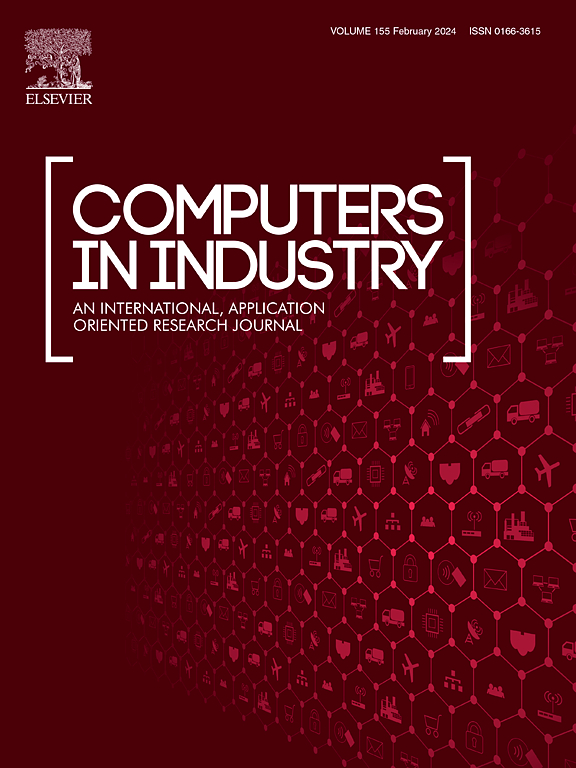On design of cognitive situation-adaptive autonomous mobile robotic applications
IF 9.1
1区 计算机科学
Q1 COMPUTER SCIENCE, INTERDISCIPLINARY APPLICATIONS
引用次数: 0
Abstract
Fostered by the recent development in artificial intelligence technologies, digitalization in industries is proceeding towards intelligent automation of various physical work processes with autonomous robotic applications, in dynamic and non-deterministic environments, and in collaboration with human workers. The article presents an explorative case study on designing a cognitive situation-adaptive Autonomous Mobile Robotics (AMR) application for material hauling, in a simulated underground mining context. The goal of the research is to synthesize and present new design knowledge for improving situation-adaptation capabilities of AMR applications, which are increasingly required as the operational environments for the AMRs become dynamic, non-deterministic, and include people working on the same area with the robots. The research applies design science research methodology, and evaluates the results empirically via a prototype system, which is demonstrated in laboratory setting simulating an underground tunnel network. As an outstanding contribution, the results contribute a novel, nascent, and empirically evaluated design approach, which proposes three design aspects combining design and engineering activities across the systems engineering, knowledge engineering, computer science and robotics disciplines. Empirical evaluation is made via design, development, and demonstration of a system architecture and prototype system of a cognitive situation-adaptive AMR application, which is used in synthesis and evaluation of the design approach. The three design aspects proposed by the approach are 1) Context of operation, 2) Knowledge-driven behaviour, and 3) Knowledge driven operation. Also design challenges, future research and development needs, and innovation potential on designing of cognitive situation-adaptive AMR applications for industrial use are identified and discussed.
认知情境自适应自主移动机器人应用设计研究
在人工智能技术最新发展的推动下,工业数字化正朝着各种物理工作过程的智能自动化方向发展,包括自主机器人应用、动态和不确定性环境,以及与人类工人合作。本文介绍了一个探索性的案例研究,在模拟地下采矿环境中设计一个认知情境自适应自主移动机器人(AMR)应用程序用于材料运输。该研究的目标是综合和提出新的设计知识,以提高自动机器人机器人应用的态势适应能力,随着自动机器人机器人的操作环境变得动态、不确定,并且包括与机器人在同一区域工作的人,对这种能力的要求越来越高。本研究运用设计科学的研究方法,通过一个原型系统对结果进行了实证评价,并在模拟地下隧道网络的实验室环境中进行了验证。作为一个杰出的贡献,结果贡献了一种新颖的,新生的,经验评估的设计方法,它提出了三个设计方面,将设计和工程活动结合起来,跨越系统工程,知识工程,计算机科学和机器人学科。通过设计、开发和演示认知情境适应性AMR应用程序的系统架构和原型系统,进行实证评估,并将其用于设计方法的综合和评估。该方法提出了三个设计方面:1)操作环境,2)知识驱动行为,3)知识驱动操作。此外,还对认知情景自适应AMR工业应用的设计挑战、未来研发需求和创新潜力进行了识别和讨论。
本文章由计算机程序翻译,如有差异,请以英文原文为准。
求助全文
约1分钟内获得全文
求助全文
来源期刊

Computers in Industry
工程技术-计算机:跨学科应用
CiteScore
18.90
自引率
8.00%
发文量
152
审稿时长
22 days
期刊介绍:
The objective of Computers in Industry is to present original, high-quality, application-oriented research papers that:
• Illuminate emerging trends and possibilities in the utilization of Information and Communication Technology in industry;
• Establish connections or integrations across various technology domains within the expansive realm of computer applications for industry;
• Foster connections or integrations across diverse application areas of ICT in industry.
 求助内容:
求助内容: 应助结果提醒方式:
应助结果提醒方式:


